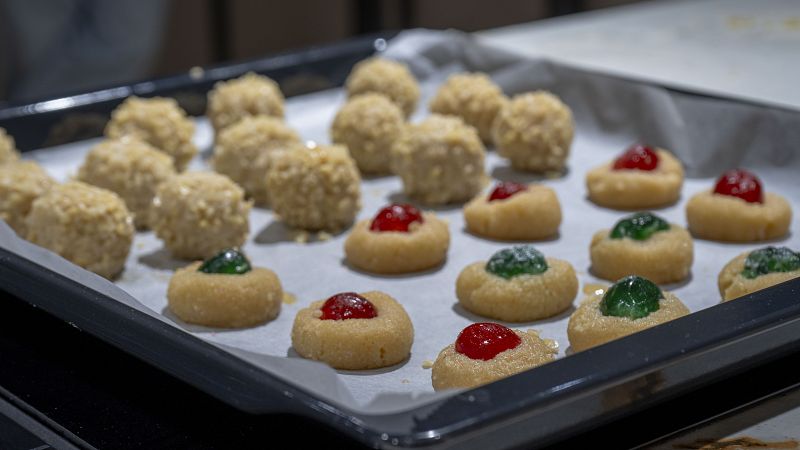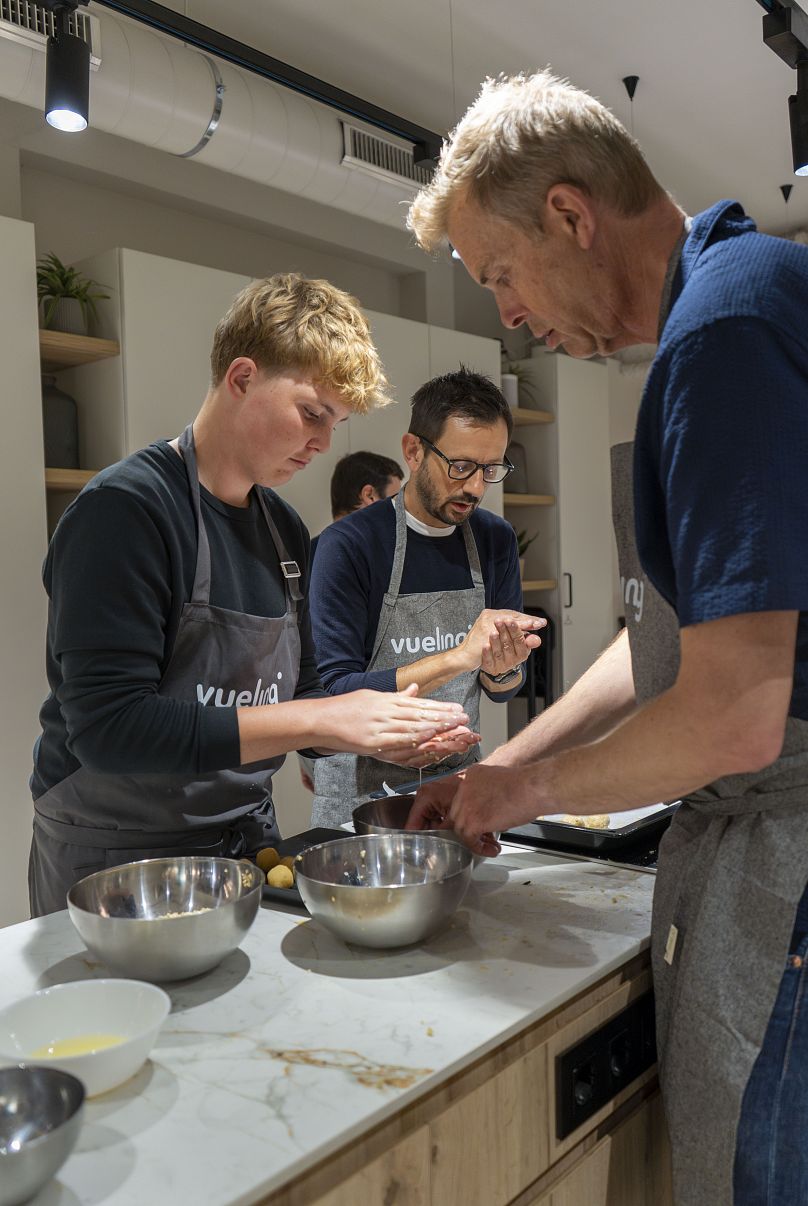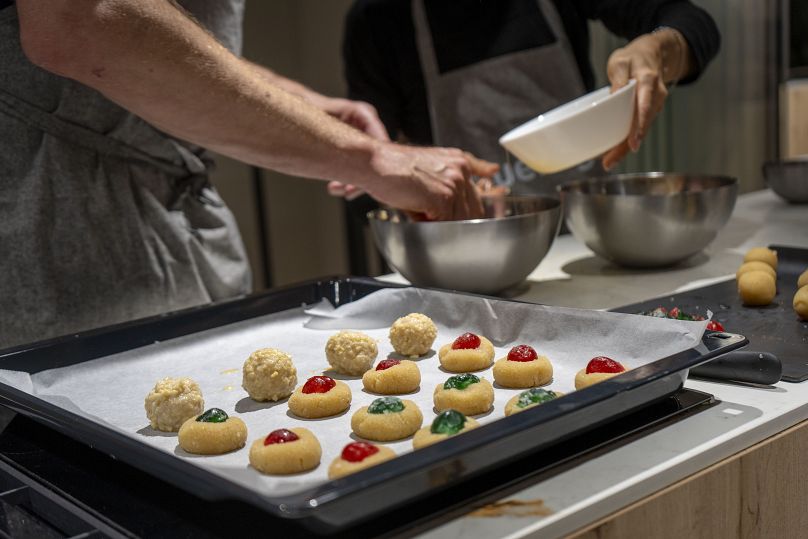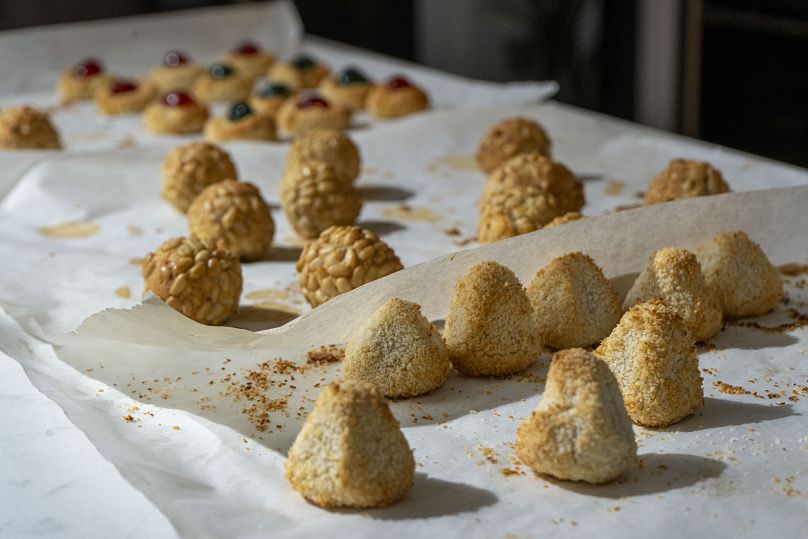The making of a Catalan classic: Panellets for the people

Panellets are bite-sized balls of marzipan that can be covered with sliced pine nuts or diced almonds before they are popped in the oven.
Similar to the Day of the Dead in Mexico, these little delicacies are usually cooked in tribute to lost loved ones, when families visit cemeteries on All Saints’ Day (1 November).
It has also become a Catalonian tradition for marking the change of season, by enjoying the food and wines that are in harvest.
This includes eating castanyes (hot roasted chestnuts), drinking muscadel (a sweet dessert wine) and foraging mushrooms in the woods.
Passed down through generations
Making panellets is seen as a family tradition - something you do with your mother or father at home then passing on the knowledge to your children someday.
To look at, these small, button-sized nibbles appear an easy thing to make. However, to find out for real, I attended La Patente cooking school in Barcelona to learn from a professional, Mayera Armas.
In a visit organised by Barcelona-based airline Vueling to promote Catalan culture, Armas took a group of journalists through their paces in the kitchen.
As someone who struggles to boil an egg at the best of times, I decided to bring a secret weapon: My son Jack Keeley. He's a keen cook who has made panellets before, so knew what he was doing.
He also saved my blushes, especially among some stiff competition from colleagues from France and Italy.
Getting the recipe right
To start off, you mix water and sugar in a saucepan and bring to a boil for about five minutes, so it becomes a sweet syrup.
Then you add almond powder in a bowl and mix well.
After this, you must add egg whites and yolks from separate bowls.
Next comes the most important part: kneading the mix - but it cannot be too dry. If you find that it is, just add more egg or some water.
By this stage - if you have kneaded the mixture correctly - you should have a long marzipan sausage.
Now comes the moment to get out a huge knife and the scales: the marzipan must be cut into tiny 20 gramme pieces and then rolled into balls.
Size matters here - these are bite-size delicacies, so if they are any bigger, you will run out of ingredients to make enough panellets to go round. They're also typically puddings you bring to parties, so you don't want to be left short.
The next part involves coating the marzipan with your covering of choice. Traditionally, that would be pine nuts or diced almonds.
Sweet dreams are made of marzipan
The nut mix should be kneaded into the marzipan using some beaten egg white. The best way to do this is to wet your hands so that you can make them look like Ferrero Rocher chocolates, except without the trademark chocolate, of course. Each panellet should be well covered.
Alternatively, if you prefer a sharper taste, you can try pushing crystalised cherries into the centre of each panellet, but these must also be coated in beaten egg white.
Another option could be coating the delicacy with salted chocolate and/or orange.
Quince jam, a traditional Spanish produce that comes to harvest during autumn time, is another popular flavouring.
Whatever your tastes, panellets are for those with a pretty sweet tooth.
Finally, they should be popped into the oven for about ten minutes at about 200-220 degrees Celsius. Once you have taken them out, don't sink your teeth in straight away! If you leave them for a day or two, they taste much better.
Armas, who is originally from Venezuela but moved to Barcelona 20 years ago, said panellets were a defining autumn dish in Catalonia.
“Panellets are very important because it is the day you remember your relatives who have died. So, you get together with your family or friends and you go to the cemetery," Armas tells Euronews Culture.
“It is also the start of autumn. You can be eating panellets for two weeks and then they are gone.”
She said the ingredients matter because they are native to Catalonia.
“The almond trees should be flowering by now and it should be made with fresh almonds. Or it can be made with pine nuts. You need to make it with the fresh products that you have.”
Over the years, immigration to Catalonia from outside Spain has influenced the way panellets are made.
“Almond and pine nuts are the most traditional ones, but with immigration you get chocolate. But you also get quince [jam], which is typical here and it is like an autumn fruit,” she said.
“This has nothing to do with Halloween, which is American. I hope that we keep this tradition.”
Armas also stressed that panellets could not be consumed without a “little” glass of muscadel. This should typically be done by tilting a porrón – or wine jar – and swallowing it in one.
Dear reader, your author tried this - but the wine ended up all over his apron instead of down his throat.
Meanwhile, his teenage son drank the muscadel down in one.
The shame of it.
Today




